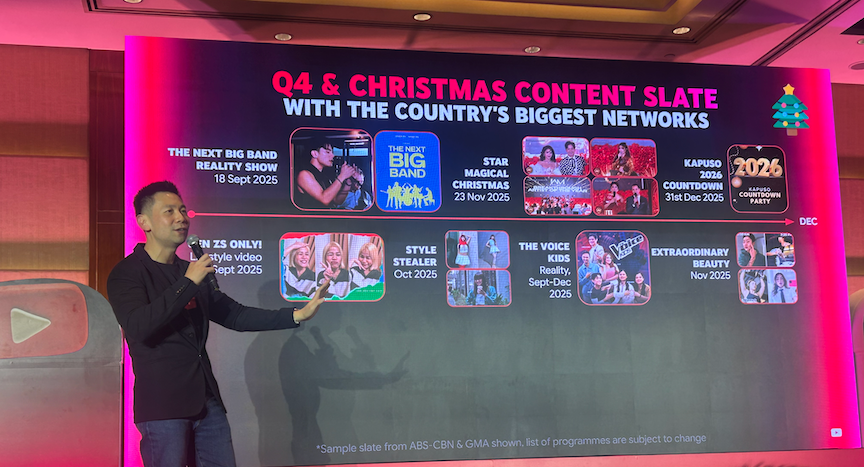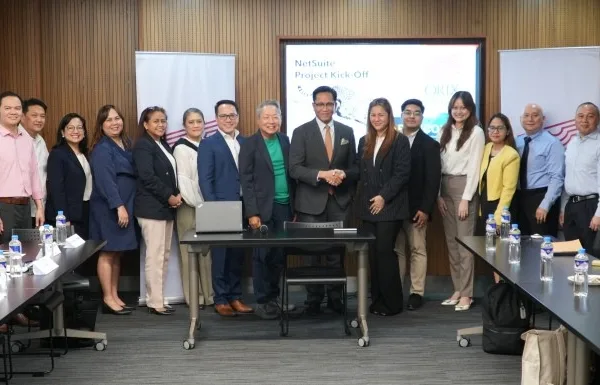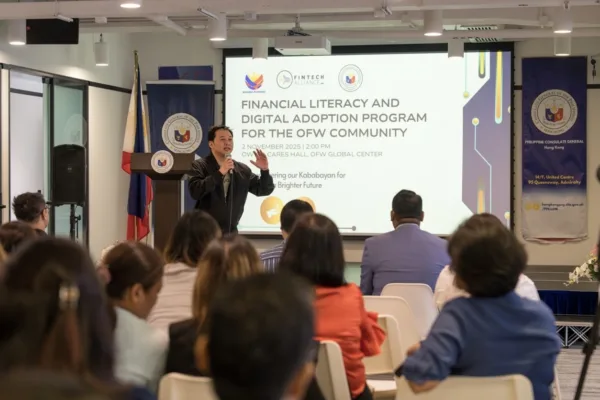At a recent industry event, Google and YouTube revealed how they are leveraging AI-powered tools to help brands move beyond fleeting attention and create “unmissable” campaigns that resonate deeply with audiences.
The event, titled “Unmissable: New Rules in the AI Era of Media,” showcased how a strategic blend of AI, compelling content, and creator partnerships is redefining how companies connect with consumers in the Philippines.

From left: Food creator Erwan Heussaff, Maggi Philippines Head of Marketing Chris Nazareno, Chef Tatung Sarthou, and Google Vice President for Southeast Asia and South Asia Frontier Sapna Chadha after their live cooking demonstration of Filipino dipping sauces.
Google: Capturing “flow” and winning attention
In today’s crowded digital landscape, the key to success isn’t just fighting for attention — it’s capturing the “Flow” state. This is the moment when a viewer is fully immersed in content, with a receptive and positive mindset.
According to Google’s findings, reaching this state of deep engagement leads to higher purchase confidence. Brands that can achieve this can turn a casual viewing experience into a motivated, purchase-oriented one.
McDonald’s pioneering living room strategy

Yves Nacpil, Marketing Manager of McDonald’s Philippines, explains how they turned a lean-back,
entertainment moment into a lean-forward, ‘I want to order now’ moment.
McDonald’s Philippines is a prime example of this strategy in action, as shared by their marketing manager, Yves Nacpil. “We wanted genuine connection,” Nacpil said. “So we asked ourselves, where are those high-value moments happening?” The answer was clear: on YouTube, especially on the biggest screen in the house — the Connected TV (CTV).
Nacpil explained that the Filipino living room has become a “gateway to a universe of on-demand content,” a trend confirmed by YouTube’s insight that CTV is its fastest-growing surface in the Philippines. “This challenged an old assumption we had,” he noted. “We thought the premium experience of Connected TV was only for high-end brands. But we saw an incredible opportunity.”
For a campaign built on value meals, Nacpil argued that CTV was not just relevant, but “essential” because critical family decisions, like what to eat, are being made “right there together on that couch watching YouTube.”
To own this high-attention moment, McDonald’s used Google’s AI-powered tools, including Video Reach Campaigns and a dedicated line item for CTV targeting. They also made an “unmissable brand statement with the Google TV masthead.” This full-screen ad placement, featuring beloved celebrity couple Alden Richards and Maine Mendoza (or “AlDub”), felt natural to viewers used to seeing them on TV. This “blurred the lines between advertising and entertainment,” making their message feel “immersive, and impossible to ignore,” Nacpil concluded.
By utilizing these tactics, McDonald’s successfully turned a lean-back, entertainment moment into a lean-forward, ‘I want to order now’ moment, which led to a 46% increase in average daily sales and a 35% boost in search volumefor their brand terms.

Paige Vicente Gacutan, Myra E Brand Lead of UL Skin Sciences, Inc. shares on stage how Myra grew its users in Visayas through YouTube’s Regional Reach capability
Similarly, vitamin supplement brand Myra used YouTube’s regional reach capabilities to make a significant impact outside of Metro Manila. Their targeted campaigns led to a 5% increase in usage in the Visayas region and a 7% increase in their market share in the area, proving that strategic, localized content can drive national business growth.
From clicks to commerce: Building lasting relationships

Ben Loh, Country Video Lead at Google, while explaining the new AI approaches they’re offering.
The new rule of commerce is not just about a final click; it’s about using AI to cultivate a consumer journey that leads to a confident purchase. A recent report from Google found that 89% of shoppers who use Google and YouTube are satisfied with their purchases. This strategy focuses on building long-term relationships with a massive audience, recognizing that a significant portion of sales still occur offline.
Ben Jern Loh, Google’s Country Video Lead, emphasized this new approach. He explained that consumers “aren’t just looking for products. They’re actually looking for confidence, for trust, for conviction in that decision-making.” The old rule, he noted, was to “over-focus on the last click,” simply harvesting existing demand. “But the new rule is fueling the consumer engine to build that high-quality intent that makes that final purchase journey because it made it inevitable for the consumer to do so.”
Loh stressed that brands must be the “fuel and not the friction,” providing “that high-octane fuel of helpfulness that powers their sense-making engine.” He explained that Google and YouTube’s AI is what makes this possible. The technology processes “billions of real-time consumer signals to understand their intentions,” empowering brands to be helpful at every step of the journey. As Loh put it, “You become unmissable not by interrupting them but again by empowering them.”
Chowking, a Filipino fast-food giant, demonstrated this by prioritizing YouTube for their “Oohlala Lauriat” campaign. By leveraging Google Performance Max, they saw a staggering 138% spike in search interest and a 60% reachamong the 25-44 demographic in just six weeks. These impressive online numbers translated directly into a significant increase in offline sales, highlighting how digital strategy can effectively drive real-world business results.
Shaping culture through trusted creators

A Rexona executive explaining their “Coolest of All Time” campaign with LebWrong James and Ferry Lukas, a.k.a. Jordan Crakson
In the AI era, brands must go beyond advertising and engage with distinct cultures and fandoms. The most effective way to do this is by collaborating with creators who have already built trust and credibility with their communities.
Kantar’s survey found that Filipinos rank YouTube as the number one platform for creator content, with 90% agreeing that its creators are the most trusted. This trust is a powerful asset for brands looking to connect authentically.
Rexona successfully tapped into the Philippines’ deep-seated passion for basketball with its “Coolest of All Time” campaign. The brand collaborated with influencers and leveraged Filipino humor and values to create a video campaign that resonated deeply with the local audience, keeping Rexona top-of-mind.
YouTube is further expanding these opportunities by partnering with major sports leagues, including the Premier Volleyball League, One Sports, and the highly popular UAAP. These collaborations allow brands to tap into passionate sports fandoms and reach millions of viewers who are deeply engaged with live games and sports content.
The Google and YouTube event serves as a timely guide for brands navigating the evolving media landscape. It’s a clear call to action: move beyond vanity metrics and invest in strategies that build true, authentic, and lasting value by combining AI, compelling content, and trusted creators.








